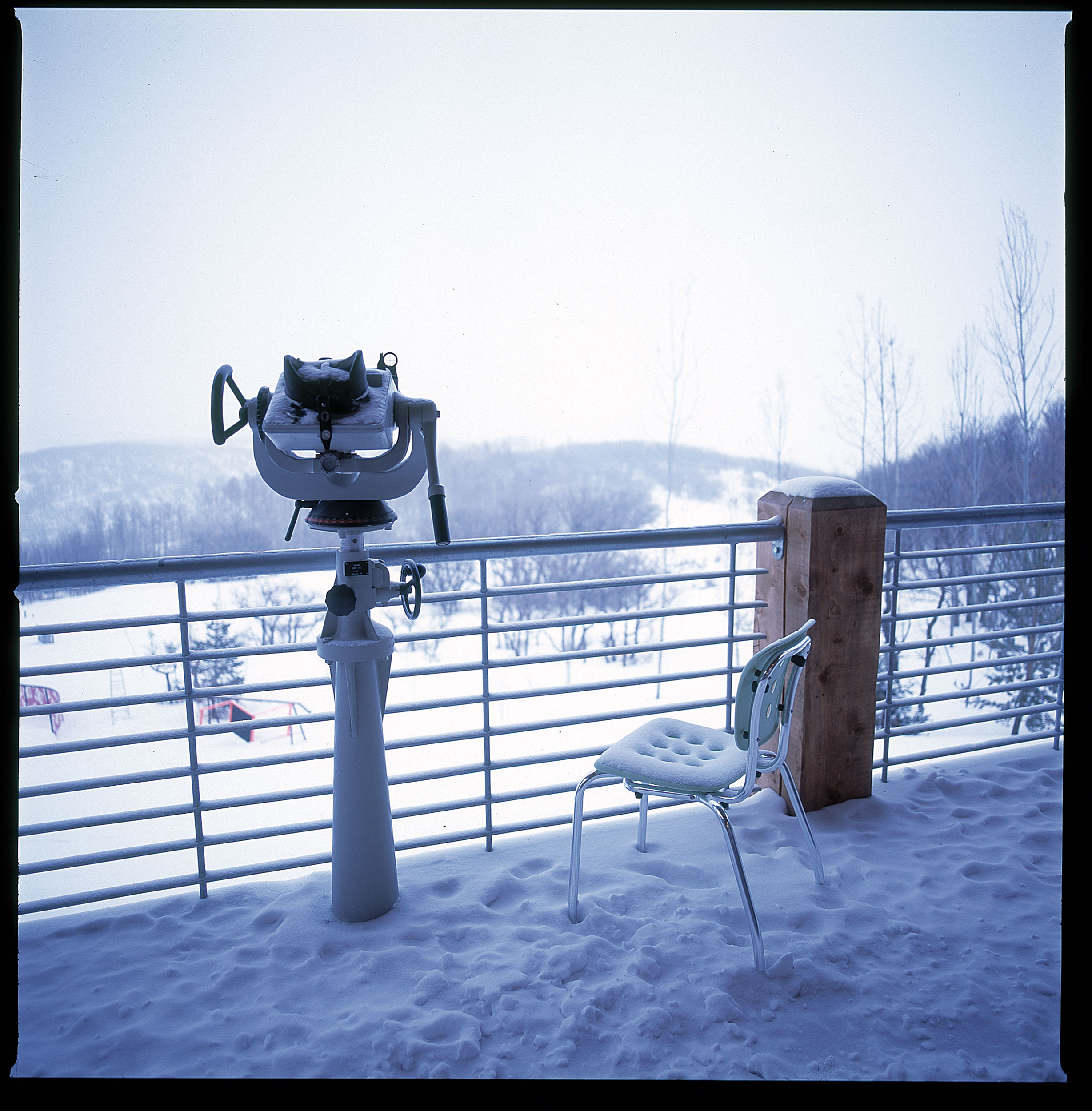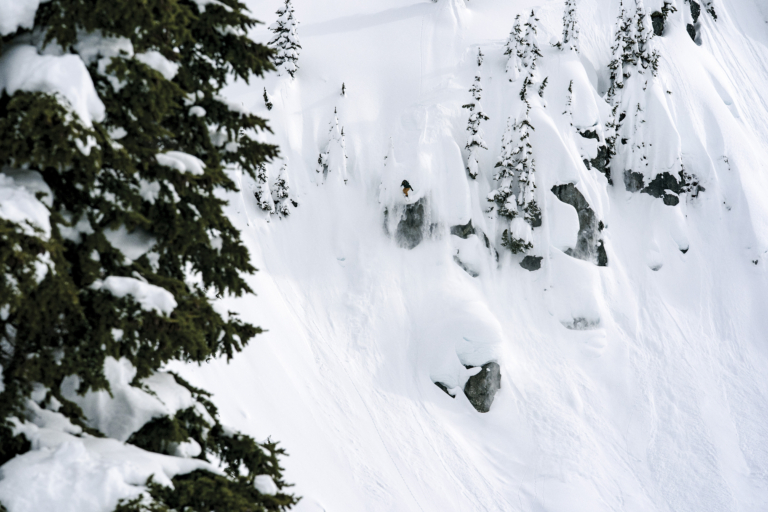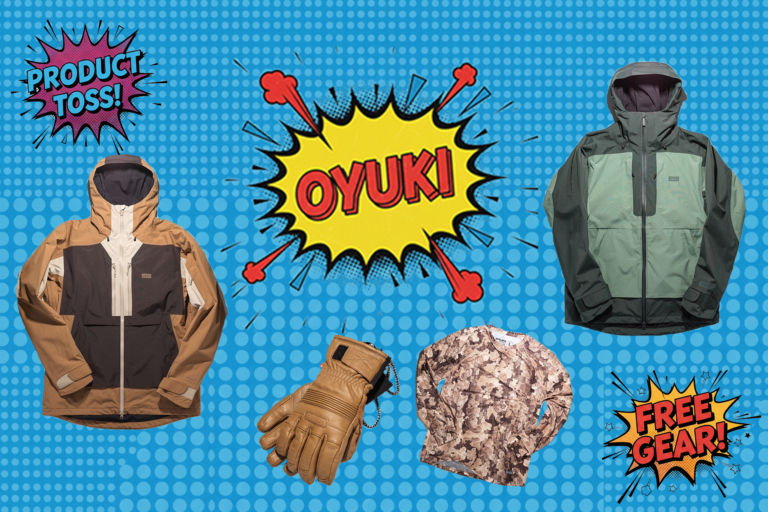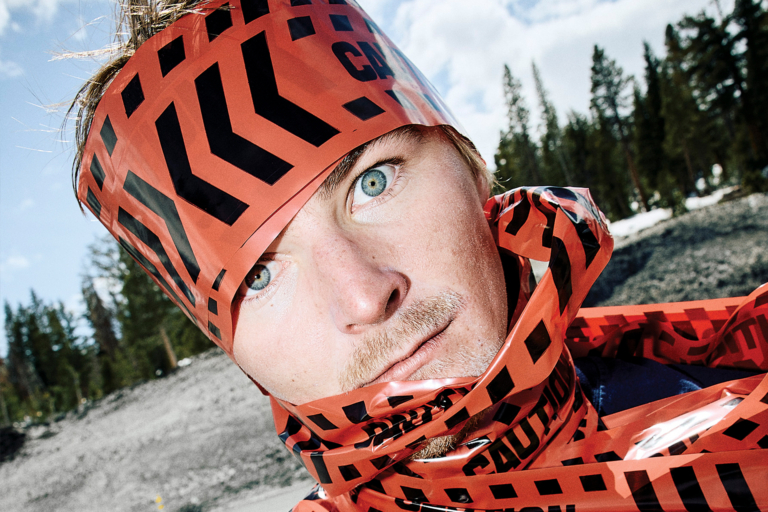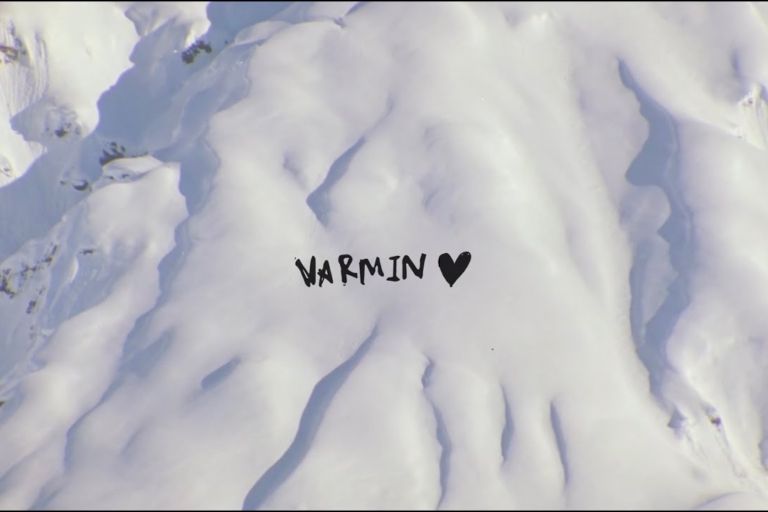Last year, Ken Block approached me with a project. He and skater Rob Dyrdek had an idea for a movie and they wondered if I would be interested in writing the script.
It was right around the time the $150 million sale of DC to Quiksilver went down so I knew Ken was loaded. Plus Ken has a reputation of being very generous with his money so I was sure to be paid top dollar for my services.
“Fuck yeah,” I said.
For the next few months I pestered Ken about the script. You don’t want to seem too eager in these situations. You gotta look cool. Like you got so much shit going on you’re not even sure if you’ll be able to make time to write a script. So about once a month I’d write him an email with some innocuous nonsense like, “Hey, who handled the deal for the DC coffee book? Oh, and by the way, what’s up with that script? You have time to meet up this month?” Real sly.
But Ken never had time for me. There was always something on his plate that was more important than me and that script. First, it was the Quiksilver deal. Then he got married and went on a honeymoon for a month. Then he had to feed his dogs. Then he had to paint his house. Then he had to cut his toenails. I don’t know, it was always something and it went on like that for months. I’d write, carefully veiling my begging, and he’d write back apologizing that he was just too busy but we’d get to it soon enough.
After stringing me along for what seemed like a year, he finally did the honorable thing and flat-out said it wasn’t happening.
“Yes, I am lame,” he wrote in an email. “I still cannot find time to get started on this project. I am now busy with ’05 budgets and plans….and that is going to take months. So, basically, I want you to know that I am a loser and am not going to start on this one for a while. I will let you know when that changes. Talk to you soon.”
Fair enough. It’s not happening. Fine. I’m not getting any money out of Ken Block. I can live with that. In fact, I’ve been living with that my entire life. Or without that, as it were. But then at the end of the email, he goes, “Check out my ridiculous waste of money (attached)…a car!”
Attached were two pictures of a brand-new Bentley sports car.
“Is this what rich guys do to swing their meat around?” he wrote, “….buy cars? Whatever. It sure sounds kind of neat sometimes, though, to say I own a Bentley.”
I’ll bet it does, a–hole!
What kind of shit is that? I was flabbergasted. What a fucker! Here I am just trying to squeeze a few bucks out of the dude and not only am I denied, but he taunts me with his Bentley. Oh, heartless, evil fiend. How you will pay!
The car, I have to admit, was indeed very nice. I think it was even featured in a car magazine. As well it should. He spared no expense on the machine. In the photo of the interior, for instance, everything was monogrammed with the DC logo. I was especially enamored by the plush, DC floor mats.
“That’s cool,” I responded. “Just keep me posted. In the meantime, can you send me one of those floor mats? Those are my initials too, you know, and I think one of them would look really nice on the floor of my pickup truck.”
He never responded. He probably chuckled and hit “delete.” But from that day forward I vowed that I would someday make one of Ken’s DC floor mats mine. In fact, I even began to fantasize that the floor mats were mine. They were monogrammed for me! And I want them back where they belong!
The opportunity to get my floor mats “back” arose sooner than I thought. J2 called me up recently and asked whether I would like to go to Utah to interview Ken Block at his vacation ski chalet/ “Mountain Lab.”
“Heck, yes I would,” I said. “Heck…yes…”
Ken’s been snowboarding a long time—more than 15 years. He was even snowboarding when it was lame. And during all that time he has worked his butt off to make snowboarding more fun, more enjoyable and less lame. He has succeeded in many ways, and he’s been rewarded for all of his efforts. Most recently in the form of the Mountain Lab. In 1999, Ken bought 22 acres in the Wasatch Mountain range near Park City and began designing the Mtn. Lab property and facilities.
So on a lovely Sunday afternoon, J2 and I drove up to Ken’s Mtn. Lab armed with some sketchy directions and a really crappy drawing of the gate in front of the retreat. After going through a couple of other gates and driving around in circles on a one-lane road up in the mountains, we eventually stumbled upon [the gate]—very industrial and imposing.
“The drawing’s not so bad,” I said.

We typed in the code and a pair of giant weights descended and the huge wooden gate was lifted. We parked in the driveway and Ken greeted us at the front door dressed casually in DC sweats. He led us into the foyer that led into a huge, open room with exposed wooden ceiling beams. Ken’s wife Lucy was in the kitchen along with some friends visiting from New York. They were all enjoying the last day of a vacation.
“Do you want a tour?” Ken asked.
He led us around the upper floor, showed us his office and the bedroom, before leading us downstairs where there was a garage/locker room off of a hallway that led to the guest bedrooms.
“Very nice,” I said. All the while I was making mental notes on everything that had my initials on it and wasn’t nailed down.
While J2 set up lights, Ken and I retired to a table on the back deck and huddled around my tape recorder.
“You got hella nature up here,” I said admiring the view of the valley below and the mountains in the distance. You can barely see the few neighbors that he has up there.
“I had ordered a deer for you guys,” he said joking, “but it hasn’t come by yet.”
“So how did this whole Mtn. Lab-thing come about?” I asked.
“The main thing,” he said, “was with DC. We were making skateboard shoes for a few years, and then we decided to start making snowboard boots. I was the main person who developed them, designed them, tested them and all that stuff. So the most convenient place for me to travel to was Salt Lake City because it was only an hour and a half flight out of San Diego. So I’d just fly out here, rent a car and go ride at Snowbird, Brighton, Park City. Just testing boots.”
The snowboard park wasn’t part of the original plan. But during that first winter he stayed at the property, they put some boxes and picnic tables and stuff in the front yard and rode ‘em.
“We had so much fun the first year,” he said, “that I bought the 10 acres next door because it has a steeper run. We figured, might as well get this stuff a little ways from the house, you know?
“Yeah, because those pesky snowboards are always flying through windows,” I said.
“So we bought the land next door and made a better park the next year. And that worked out so well we put in a rope tow. And then last summer we hired Chris ‘Gunny’ Gunnarson who came in and made a more permanent, better park.”
One of the features is a missile. A pink missile. “Who thought of the pink missile?” I asked.
“The missile was my idea of having something really obscure out there,” he said. “Initially I wanted a helicopter.”
“What the fuck can you do on a helicopter?”
“Ride across the top?” he asked, laughing. “I don’t know. We couldn’t find a helicopter or a plane that would fit so we found the missile at a junk yard.”
Now they have a missile. Among other things. Basically, he’s created snowboarding’s first T.F. (what we in skateboarding call a “training facility”).

“Yeah,” he said, “this is a private home and snowboard park with its own lift; there’s nothing like it in the entire world.”
“Do you think others will follow your lead?” I asked.
“I can see some of those other companies doing it because it’s just been so functional for us. We’re able to interact so well with some of our retailers. We bring some of them up here, show them the product, get feedback, take ‘em out and have them ride the stuff right here. There are rooms for everybody to stay. It really makes the whole ‘work and play’ concept wrapped into one place.”
“But, seriously,” I prodded, “this is just a big tax write-off, huh?”
“It definitely helps with taxes,” he eventually admitted.
One of the things I hate about snowboarding is the money and effort required to do it. Having grown up a skateboarder, I’m used to stepping out my front door and jibbing and bonking whatever I want, whenever I want. There’s no one looking at my pass and there’s nobody babysitting me or making sure I stay on the trail. At the Mtn. Lab, there’s none of that nonsense.
“I think,” he said, “[the riders] like coming here because, as you said, there’s not the strict rules and stuffiness of a ski resort. We’re able to build and do whatever we want. Occasionally, we’ll take the cooler over there, and the BBQ and some burgers and beer, you know? I think for them, knowing that a company is willing to put up and do something like this for them means a lot. Like with everything, skateboarding, snowboarding, we want to be involved with it and make products because we like it—and, the better the product we make, the better it is to have fun. Does that make sense?”
Ken asks that a lot. “Does that make sense?” He’s not asking it the way most people do: as an empty island of words that do nothing other than cover up the silence and give the speaker time to think. Nah sayin’? Ken actually wants to know whether what he’s saying is making sense to you.
“Yes,” I said. “Everything about this place makes sense. Except the rope tow. I understand you’re breaking the law with that thing.”
“No,” he said, laughing. “The rope tow is permitted and everything. There’s all kinds of fun little laws, here. We even had to name it because it’s a state law that your lift has to be named. So they sent me a form that said what’s the name of your lift? We had a contest on the internet to come up with the name.”
“What’s the name?”
“Little Biggie.”
“That’s cute. But don’t you have to have lift operators or something?”
“Yeah. We’re supposed to have a lift operator that has CPR training and all that stuff. And we do have those people, they’re just not here 100 percent of the time. When I wake up and it’s powder out there and I just want to ride over and snowboard, I’m not calling him to come over and watch. But it’s cool because I can ride over there, put the key in, turn it on, and ride powder for a couple hours and come right back into my home. It’s a good time.”

I excused myself to go use the restroom—and, hopefully, steal some DC-monogrammed hand towels. Plus, I wanted to critique his toilet. I recently visited Morrissey’s house (long story) and peed all over his toilet while trying to take a self-portrait. As such, I’ve proclaimed myself a judge of bathrooms of the rich and famous. You know that asshole friend of yours that does something once, and all of a sudden, he’s an fucking expert on it? That’s me. Because I pissed all over Morrissey’s bathroom, I am now a bathroom judge. And I was rather surprised to find that while Ken’s bathroom was much smaller than Morrissey’s, it was by no means unimpressive. In fact, it was kind of odd. I learned later that they called it “The Prison Bathroom.” Aptly named as the two largest objects in the room, the toilet and the tub, were of the stainless steel, industrial variety one would likely find in a prison cell. I was very disappointed, however, first to realize that I didn’t have a shit pulling into the station so that I could see what that stainless steel thing was made out of, and second, to discover that there wasn’t a single DC item in the bathroom.
While we were on the subject of toilets and beer and stuff, I thought of Blunt magazine which Ken started in 1993. I thought of asking for a cup of coffee and a cigarette, but instead asked, “Why did you start Blunt?”
“I grew up a skateboarder in Long Beach,” he said. “But as I got a little older I didn’t skate so much and I learned to snowboard. And when snowboarding was a budding new sport, I really liked it. But then I’d go back to Southern California and hang out with skateboarders like Danny [Way] and Colin [McKay] and those guys just didn’t respect snowboarding that much. It was just ski suits and goofiness. And part of that problem was the magazines. I was with Danny one time in a 7-11, and he picked up this magazine and was looking at it like, ‘Look at this crap.’ They couldn’t even figure out what to call the tricks.”
“Is that why they were calling frontside airs, indy airs?”
“Yeah, I think it was just lack of knowledge,” he said. “There were people in the market that didn’t have enough knowledge about similar tricks that already existed in skateboarding and already had names. I was embarrassed for snowboarding because here was this sport that I really, really liked and was really fun for me—and we even made some snowboard products at the time— yet, all my good friends were goofing on it. So I had a real desire to help the sport and see it get better, and I had a real desire to make a magazine. At the time, the inspiration came from Mr. Tremaine and Big Brother. And that’s why I came up with Blunt. My goal wasn’t necessarily to take over the world with a snowboard magazine and have it as a crazy-big business, it was more about doing something different and catching the raw essence of the type of snowboarding that I was into which was more of skateboard-style influence. The other magazines didn’t showcase it very much. They were more into the powder turns and cliffs and stuff like that. The kind I liked, just wasn’t there.”
“Kind of like how Big Brother was born because Thrasher and Transworld were just sucking at the time,” I said.
“Yeah, exactly,” he said. “Except the snowboard magazines had these powder shots with dudes in florescent suits. The snowboarders that we were like were wearing baggy jeans and a jacket that doesn’t match, who cares? We were out for the fun of it, not because we’re trying to match [outerwear] on the mountain and do a powder turn. So that was the inspiration, and it was more of a fun project that took on a life of its own because it was so successful so fast.”
Both magazines were very successful at first, because they were so different. They were the only two mags that saw no boundaries between what you did on your board and off your board. From the bedroom, to the bar, to the bathroom, all of it was part of the sport. In so doing, both magazines destroyed the notion of either snowboarding or skateboarding being a sport. They were lifestyles.
“Well the thing is, with me,” Ken said, “I take a lot of pride in saying that I’m a skateboarder or I’m a snowboarder. It’s a lifestyle and it’s fun, and it’s about a style. No matter what you do, there’s a style to it. On and off the skateboard or snowboard, I think that’s what I really enjoy. I think those [Blunt and Big Brother] magazines covered, and made fun, and highlighted whatever, and it’s that part of the industry, still to this day… Well shit, I haven’t skateboarded in five years—but—”
“Dammit, Ken,” I said interrupting him. “I wanted to ask that question.” That was going to be one of my get-tough journalist questions because he calls himself a skateboarder, but I knew it had been quite a while since Ken had ridden a skateboard. Usually people in the industry are pretty sensitive about that. No one likes to ride for a company where the owner doesn’t even skate. I had expected him to squirm and beg for mercy before the ruthless question regarding his involvement in skateboarding, but here he was admitting it before I even got to ask it.
“Well let me finish my statement first and I’ll get to that,” he said calmly. “Even though I haven’t skateboarded in five years, I still feel like a skateboarder because I interact so much with the industry, and it’s something that I love so much that I don’t think I’ll ever outgrow it. But as far as stepping on a skateboard, I don’t like sucking at something and skateboarding takes a certain level of commitment to do. If you don’t do it, it’s a very painful, humiliating thing. But snowboarding—that’s why I’ve kept up with snowboarding. It’s something that you can go out and not do very often, and it’s simple to the point where you can still have fun. The damn thing doesn’t hit you in the shins.”
Well played. Well played, indeed. To be a skateboarder, you have to accept the inevitably of getting hurt. There are various levels to skateboarding, but even just a casual cruise around the park is fraught with danger. And as you get older, getting hurt, hurts more.
(Did he just say that snowboarding’s for pansies?)
Eventually, Ken couldn’t handle doing Blunt anymore and he turned the mag over to us, the staff at Big Brother. A bunch of skateboarders were then in charge of a snowboard magazine.
“The problem for me was,” Ken said, “I loved doing it [making Blunt], but producing a magazine is a really gnarly thing and I was running Droors clothing, Dub clothing, Eightball clothing and Type-A snowboards. Yeah, DC hadn’t started, but we were doing all that at once, out of the same office—and I was doing Blunt at night; staying up all night to get it done. It was a really dope time of my life and I feel like that was a really cool window of snowboarding, too, because that was a real transition period. Because of the people today and the style of snowboarding, it’s kind of leveled off. People know what the tricks are nowadays, it’s very stable, but back then it was all over the map. It was progressing right in front of our eyes. It’s cool that I was a part of that history.”
Blunt, as unique and fucked up as it was, eventually came to an end in 1997 shortly after Larry Flynt bought it and the snowboard industry took a shit on itself. A lot of snowboarders still mourn the death of the mag. “Do you think snowboarding needs another Blunt?” I asked.
“I always think that snowboarding or skateboarding could use another Blunt or Big Brother,” he said. “But at what level? Everyone has their own personal opinion where the line is that you can cross.”
“The line is way higher now,” I said. “It’s only been 15 years, but today’s media climate is way different than it was when we first started making those magazines. Back then we could kinda get away with the shit we were doing, but could it survive now? I don’t know.”
“I’m just real psyched to see someone do a good job representing our sport.”
“When DC first started,” I asked, “it was a skateboard company. Given the kind of isolated nature and core ideals of the skate industry, was it a difficult decision to add snowboarding to your program?”
“It was a little difficult,” he said, “but there was some precedence set for us and we’d already done Type A. Danny was already a snowboarder. He had his own pro model on Type A. But it was a tough decision because we were skateboard-only at the time. I think we talked to all of our skateboard pros and everyone was of the consensus that they liked snowboarding. They felt that it fit with the company, and they knew my background with it—how much I liked it and how involved I was with it. So it didn’t come from left field like we were making some really random product.”
It’s always been amazing to me that DC not only survived in what can only be described as a very aggressive and punk rock market, but became leaders and trendsetters of the “fresh look.” I grew up in the punk rock atmosphere of Northern California, so when people like Rob Dyrdek started rocking trainers and diamond necklaces with their hats stylishly askew, I thought it was fucking hilarious. They looked like iced-out jocks—clowns, even. It was the complete antithesis of skateboarding as I knew it. And snowboarding just seemed to perpetuate the “whack-ness” of it all. But they’ve pulled it off. They won.
“There’s always going to be that person that feels like it’s a skateboarding-only world, you know?” he said after I asked about the disparities between all the sports that DC sponsors. “I, and we as a company, don’t necessarily feel that way. Fortunately, everyone has their own opinion where that line is, but we’ve had to guide it as to what we think is best. Even back in the day when we went from skateboarding only to adding snowboarding and some other sports, we still kept our roots as skateboarding and skateboard shoes. DC never veered from that at all. We’ve always been 100-percent skateboard company.”

“Do you enjoy business?” I’ve never been able to figure out how rich people do it. If I did, I’d be rich. “Is it a fun game, making money and growing?”
“I’d say the answer is yes and no,” he said. “The back-end business stuff is not easy and I’m not good at it. I’m much more of a marketing person and a design person. Being successful is fun. Like, coming up with the skate plaza, and us going from beginning to end and seeing it finished—that’s fun to me. That’s accomplishing something and being successful with it. And the style and nature of a company and having kids really appreciate it, that’s really cool to me, like when a kid comes up to me and tells me he’s really psyched on what we do. The money side of things, that’s the result of the hard work. I mean, I enjoy that side of it. I have some nice cars, but still my favorite car to drive to work is a Ford truck, you know? The material side of things, they’re nice to have, but that’s not where I really feel the fun of life.”
“What’s it like having all that money? Is $40 million really different from $5 million?”
“Yeah, there’s always a price on everything. I’ve worked so hard to get where I’m at that I look at it now as the money has to last me the rest of my lifetime. Who knows if in five years I’ll still be doing the same thing. I might not have any income in five years.”
It’s funny that he mentioned his money has to last him because it allowed me to ask a question that’s been bothering me for a long time. “Why do you think rich people are stingier than poor people?”
“Well, see, I don’t really know that,” he said. “I’ve never really been a very stingy person.”
“It’s the poor people that tip well,” I said. “You’ve never noticed how rich people are always asking for discounts and stiffing ‘the help’ on tips? They fucking nickel and dime everything.”
“Yeah. I appreciate people for their hard work and their talent and if I have the money to make it worth their while, I’d rather make it worth their while than nickel and dime them. Does that make sense? I really appreciate all of the people that have worked very hard for our company.”
With the success that DC has had over the years, I would imagine that there are a lot of people out there who would want a piece of the company. “You guys have a pretty strange list of sports you sponsor,” I said. “There must have been others that have approached you over the years. What’s the strangest one you’ve heard?”
“I guess the best one ever,” he said, “was when those scooters became really popular and there were actually people who thought they were pro razor scooter-ers? Some guy sent us a video of him doing a backflip on one. And he was actually mad that we wouldn’t sponsor him.”
“Have you ever regretted sponsoring anyone?”
“We’ve had individual athletes that we took a risk on or thought fit our brand but didn’t necessarily. I don’t want to name anyone individually, but we’ve had guys on for six months or a year and said, sorry, we don’t think it’s going to work out, we have to move on. We want to work with guys that fit our brand and we don’t pick them randomly–we put a lot of effort into it.”
“Well, there’s a couple of names I can think of where it’s obvious you didn’t expend much effort into at all,” I said. “Someone over there wasn’t thinking when you guys decided to sponsor Fred Durst.”
“He wasn’t on,” Ken said laughing and holding his head. “He just got some product.”
“Oh okay,” I said, not believing him. “And, actually, I asked the question wrong. It was supposed to be, Besides [Jason] Ellis, who is the strangest person you’ve sponsored?”
“I love Ellis,” he said. As do I. “But you realize that Ellis is not listed on our skate team.”
“You might want to tell him that because I think he thinks he’s still a pro skateboarder.”
“Oh he knows it. He’s hired as a personality. He’s someone who gets a lot of coverage, he’s on MTV, ESPN, whatever. He’s just someone that’s one of our boys—a la Renee Renee or Big Black.”
One of his boys, perhaps THE boy, who’s inseparable from the DC name and one of the main reasons for its success is Danny Way. The same could be said for what Danny has done for skateboarding. Throughout his career, he’s consistently helped take skateboarding to the next level. The stuff he’s done on the Mega Ramp and his recent jump over the Great Wall are probably his greatest achievements to date.
“So now that Danny has effectively destroyed snowboarding,” I said, “are you going to dismantle the snowboard division at DC?”
“That’s just such a broad statement,” Ken said.
“It’s a simple question, Ken,” I said falling into Will Ferrell’s Harry Caray voice. “Are you or are you not going to dismantle the snowboard division at DC?”
“You sound so much like my attorney,” he said. “No, we’re not. Because what Danny’s done was he was just tired of the way skateboarding was and he wanted to go somewhere else with it. He did things on a skateboard that you can’t do on a snowboard and he did it at the dimensions that snowboarders jump at. As far as dismantling snowboarding, maybe he made snowboarding look a little easier than it was before.”
Because I love the Mega Ramp stuff so much, I worry that it might be exploited in some way or just get so hyped up that it ends up looking stupid. I asked Ken if they were worried about that as well and what’s in the future for Danny and the Mega Ramp.
“It’s up to Danny,” he said. “We’re there to help him and support and be a part of whatever he’s doing. Really, it’s Danny’s baby and I support him in whatever he wants to do with it. If he wants to do a giant tour with it, or take it on Letterman, or do nothing with it, it’s really up to him.”
We talked for awhile more until I felt there was an appropriate moment in the conversation to ask Ken for my favor. “I’ve been trying to get money from you for a long time,” I said, “but I’ve never been able to.” He nodded. “Why won’t you give me any money, Ken?” I asked.
“I’d rather give money to charity than give money to you, Dave,” he said, laughing. Bastard.
So I told him the story about the Dyrdek script and how he strung me along for months and then right when he cut me off, he sent me a picture of his fucking Bentley. I was guilt-tripping him. “Ken?” I asked, “why did you do that?”
He pretended he didn’t remember and acted like this was all a joke. “That’s really funny,” he said. “I don’t know.”
“Do you remember my response?” I asked. He didn’t. “I said, ‘Can you hook me up with a monogrammed floor mat?’”
“I don’t remember that one.”
“I don’t care if you remember it or not,” I said, losing my patience. “Can I have a monogrammed floor mat?”
“I don’t have any,” he said flatly.
Liar!
“Alright,” I said. “I’m done with you. Would you like to give any shout outs to your sponsors, or anything?” I asked sarcastically.
“I guess the only comment I would like to make, is, I’ve always been in appreciation of the actual sports and style. You know how when you watch someone like Danny skate vert live and you’re just like, Fuckin’ A, that’s ridiculous? I still feel that way when I see someone snowboard or skate. It’s still like that little kid appreciation of pros, and I think that’s what keeps me so involved in the sport. I enjoy so much going out and snowboarding with Todd Richards and Travis Parker, or going out and watching Danny skate a vert ramp. It’s cool to still have that feeling and that’s what makes it cool to keep driving, to keep the company going the way it’s going and enjoy it.” He paused a moment before looking up and asking, “Was that good?”
“No,” I said. “You didn’t give me any money.”
With the interview over and all the words that came out of his face on tape, it was time for J2 to shoot some portraits, which left me free to roam around the Lab in search of my monogrammed floor mat.
First I snuck into Ken’s office and, sure enough, there was a DC floor mat on the way in. Kind of. It was like the DC logo inlaid in the wood. If I had had a chisel or a saw or something, I probably could have lifted that. I started poking around and found all kinds of free giveaway shit, but that’s not what I was after. Shirts? Stickers? A DC super ball? Sure, I’ll take a couple of each, but this shit was inconsequential.
I left the office and ventured past the photoshoot that was going on in the staircase. “Oh, that looks good,” I said, trying to hide the armful of schwag I had snagged.
I went into the living room and found nothing. There were a lot of framed pictures on the walls, but I didn’t want any of those. There were a couple of turntables, though, over in the corner with DC platter covers on them. Mine! Now my turntable at home says “DC” on it.
As the photoshoot went from the stairs to the bathroom (where J2 tried, unsuccessfully, to get a portrait of Ken on the toilet), I went downstairs to the garage.
The garage, as I think I mentioned, is lined with lockers. On the outside of each locker is a chalkboard with a name on it. Todd Richards. Devun Walsh. Bjorn Leines. I started opening all the lockers and rifling through all the shit in them. Nothing interesting. Ken’s wife’s locker had a boogie board in it. Huh? By the time I got to the last locker (It belonged to one of the Travis-es…Parker or Rice, not sure which. There’s too many Travis’ on DC…you could say they have a Travis-stee?) I was annoyed and decided I’d take whatever was in it. I opened the door and it was empty. Fuck. Except for a teeny, tiny, ‘lil DC beanie on the bottom. Great. Awesome. I stuck it in my pocket, cursed the lockers, and started to walk out.
“But wait!” I blurted, as I was opening the door to leave. “What’s this?”

On the floor at my feet was a blue floor mat emblazoned with the DC logo. It wasn’t the one in the Bentley photo (or even a car mat) and it was covered in dog hair, but it was a DC floor mat.
Mine!
I rolled it up, walked upstairs and, while they were still putzing around with the portrait, I walked outside to J2’s car where I buried the floor mat in the trunk.
“Heck, yes,” I said. “Heck… yes….”



